A conductor A with a cavity as shown in Fig. is given a charge Q. Show that the entire charge must appear on the outer surface of the conductor.
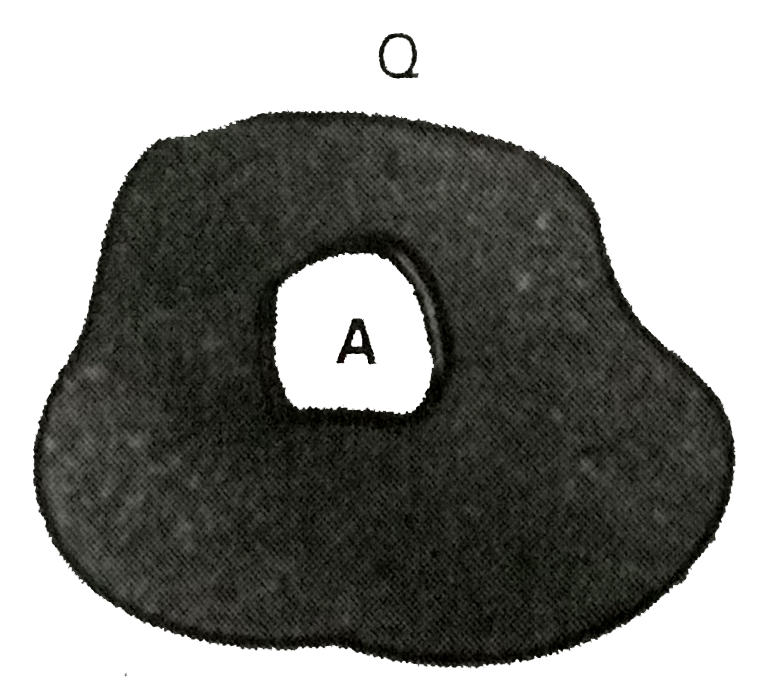
(a)−3×10−6C,(b)+1.3×10−5C
Topper's Solved these Questions
- BOOK - RESNICK AND HALLIDAYCHAPTER - GAUSS' LAW EXERCISE - PRACTICE QUESTIONS (SINGLE CORRECT CHOICE TYPE)20videos
GAUSS' LAW
- BOOK - RESNICK AND HALLIDAYCHAPTER - GAUSS' LAW EXERCISE - PRACTICE QUESTIONS (MORE THAN ONE CORRECT CHOICE TYPE)2videos
GAUSS' LAW
- BOOK - RESNICK AND HALLIDAYCHAPTER - GAUSS' LAW EXERCISE - CHECKPOINT7videos
GAUSS' LAW
- BOOK - RESNICK AND HALLIDAYCHAPTER - FORCE AND MOTION-IIEXERCISE - PRACTICE QUESTIONS (Integer Type)1videos
FORCE AND MOTION-II
- BOOK - RESNICK AND HALLIDAYCHAPTER - GEOMETRICAL OPTICS : REFLECTION EXERCISE - PRACTICE QUESTIONS (Integer Type)3videos
GEOMETRICAL OPTICS : REFLECTION
Similar Questions
A conductor A with a cavity as shown in is given a charge Q. show that the entire charge must appear on the outer surface of the conductor.
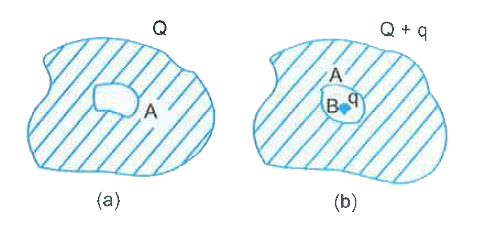
Another conductor B with charge q is inserted into the cavity keeping B insulated from A. Show that the total charge on the outside surface of A is Q+q
(c) A sensitive instrument is to be shielded from the strong electrostatic fields in its environment. Suggest a posible way.View SolutionIn the given fig. the charge appears on the sphere is
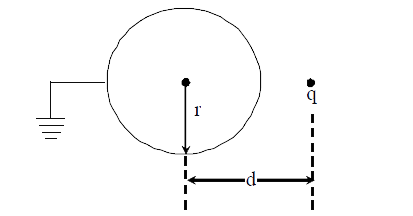 View Solution
View Solution
Knowledge Check
- Question 1 - Select One or More
Across the surface of a charged conductor
Afield is continuousBpotential is continuousCfield is discontinuousDpotential is discontinuous - Question 2 - Select One or More
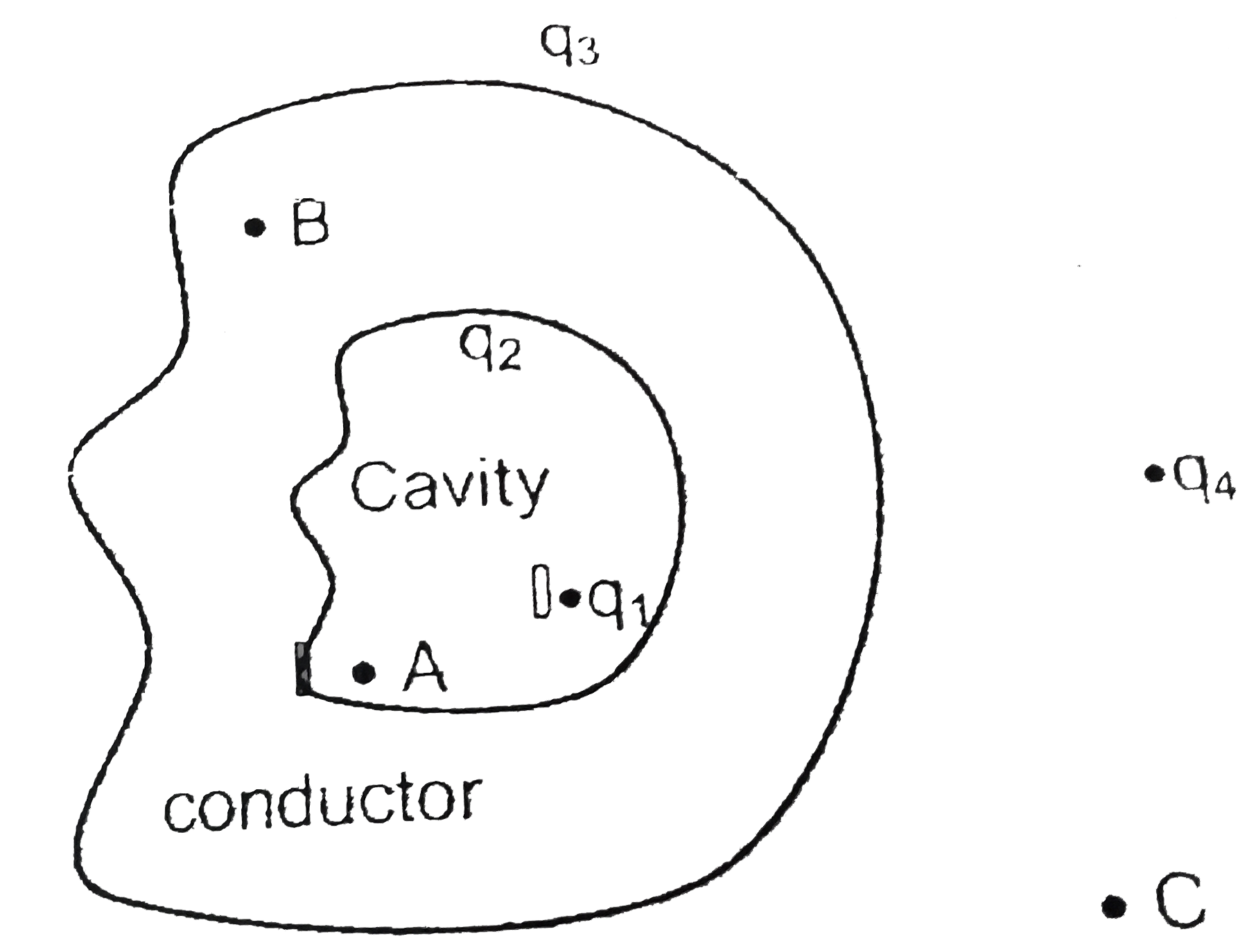
We have a fixed conductor having a cavity inside. There is a point charge q1 kept inside the cavity charge appearing at the inner surface of the cavity is q2. Charge appearing at outer surface of conductor is q3 and there lies another point charge q4 out side the conductor. Whole situation is shown in figure. q4. is held stationary by applying an external force →F0 on it. Three points A, B and C are shown. Answer the following two questions.
Q. If keeping the magnitude and nature of q1 fixed position of q1 is changed inside the cavity. Then choose the correct option(s)AExternal force required to keep q4 stationary remains unchangedBintensity of electric field at point C remains unchangedCintensity of electric field at point B remains unchangedDintensity of electric filed point B only due to q2 remains unchanged. - Question 3 - Select One or More
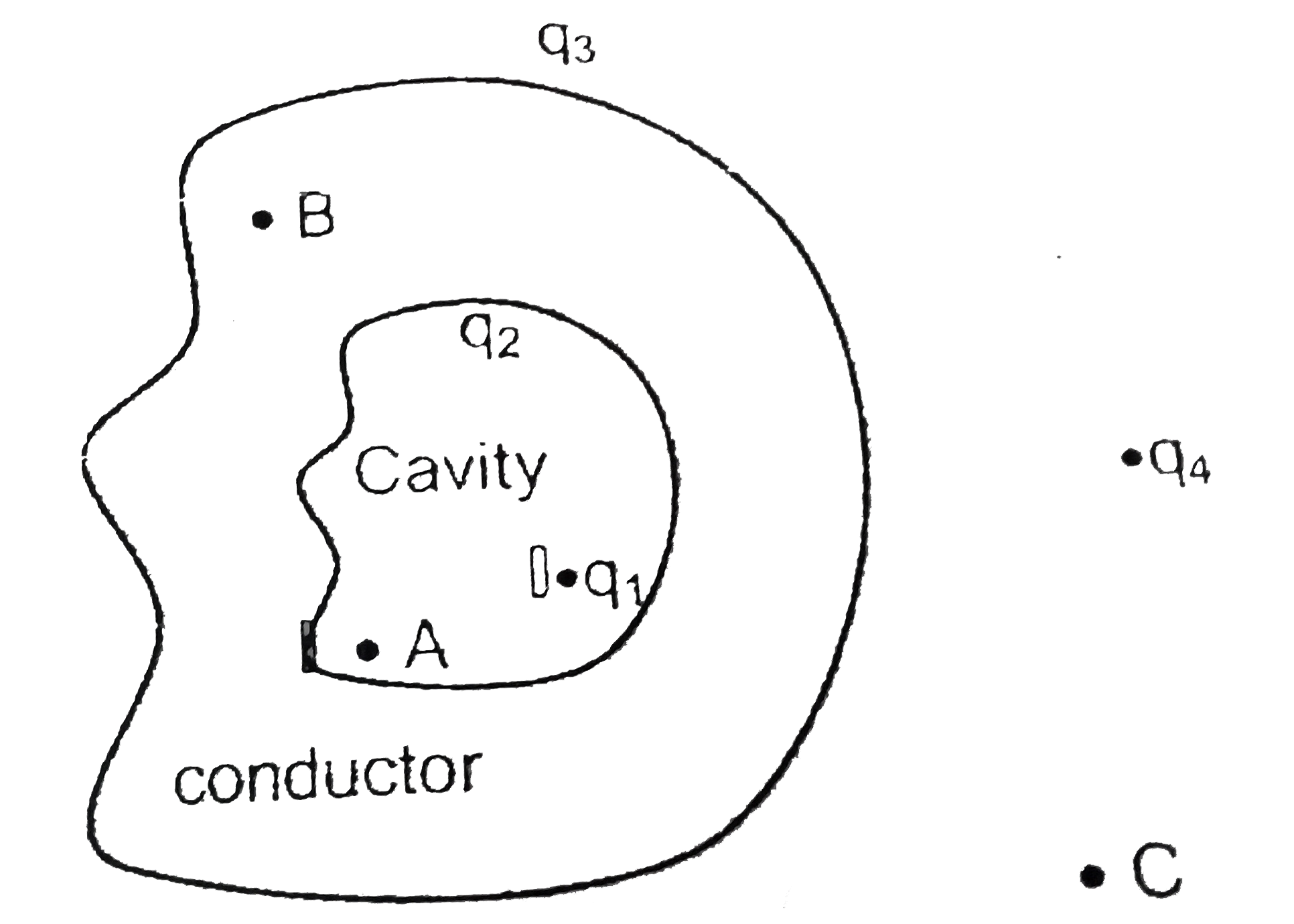
We have a fixed conductor having a cavity inside. There is a point charge q1 kept inside the cavity charge appearing at the inner surface of the cavity is q2. Charge appearing at outer surface of conductor is q3 and there lies another point charge q4 out side the conductor. Whole situation is shown in figure. q4. is held stationary by applying an external force →F0 on it. Three points A, B and C are shown. Answer the following two questions.
Q. If keeping the nature and position of q1 fixed, magnitude of q1 is changed, then choose the INCORRECT options(s)AExternal force required to keep q4 stationary remains unchangedBintensity of electric field at point C remains unchangedCintensity of electric field at point B remains unchangedDintensity of electric filed point B only due to q2 remains unchanged.
A solid spherical conductor of radius R has a spherical cavity of radius a(a+Q is kept at the center.The charge at the inner surface outer and at a position r(a<r<R)are respectively.
View SolutionThe electric field intensity on the surface of a charged conductor is
View SolutionThe electric field intensity on the surface of a charged conductor is
View SolutionConsider a conductor with a spherical cavity in it. A point charge q0 is placed at the centre of cavity and a point charge Q is placed outside conductor.
Statement-1: Total charge induced on cavity wall is equal and opposite to the charge inside
Statement-2: If cavity is surrounded by a Gaussian surface, where all parts of Gaussian surface are located inside the conductor, ∮→Ed→A=0 hence q∈duceed=−q0View SolutionAcross the surface of a charged conductor, the electric
View Solution

